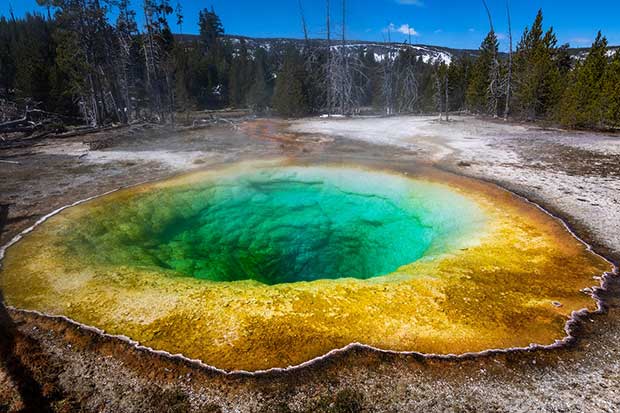The latest technology being used in geothermal energy is Enhanced Geothermal Systems (EGS). EGS involves creating man-made geothermal reservoirs in areas where natural ones do not exist by injecting water into hot, dry rock to create steam, which can be used to generate electricity.
Other new technologies being developed include:
- Direct Use systems, which take advantage of the relatively constant temperature of the Earth to heat and cool buildings, and for industrial processes.
- Binary Cycle Power plants, which use a secondary fluid with a lower boiling point than water to transfer heat from the geothermal fluid to a turbine, generating electricity.
- Ground-source heat pumps, which use the relatively constant temperatures found a few feet below the Earth’s surface to heat and cool buildings.
- Reservoir characterization and monitoring technologies, which are used to improve the understanding and management of geothermal reservoirs.
These technologies are still in development, and some of them are not yet commercially available.
What are the benefits of each of these technologies?
Enhanced Geothermal Systems (EGS): EGS has the potential to significantly expand the geographic and resource potential for geothermal energy. It allows for the development of geothermal power in areas where traditional geothermal resources are not present, such as hot, dry rock. EGS can also increase the productivity of existing geothermal wells, resulting in a higher output of electricity.
Direct Use systems: Direct use systems have several benefits. They are relatively simple, reliable, and have low operating costs. They also have a high energy efficiency and can provide a constant source of heat or cooling.
Binary Cycle Power plants: Binary cycle power plants are more efficient than traditional geothermal power plants, and they can operate at lower temperatures. They also have a lower environmental impact, as they do not produce as much brine or other waste products.
Ground-source heat pumps: Ground-source heat pumps are energy-efficient and have low operating costs. They can also provide a constant source of heat or cooling. They are also considered to be environmentally friendly because they do not use fossil fuels.
Reservoir characterization and monitoring technologies: Reservoir characterization and monitoring technologies can improve the understanding and management of geothermal reservoirs, which can lead to increased energy production and reduced costs. They also help to ensure the long-term sustainability of geothermal resources.
Which of these technologies is more commercially viable in the near future?
Currently, Direct Use systems and Ground-source heat pumps are considered to be the most commercially viable of the technologies you listed. These technologies have already been implemented on a large scale in various countries and have been proven to be reliable and cost-effective. They are being used in many different applications such as heating and cooling of buildings, industrial processes, and agricultural activities.
EGS and Binary Cycle Power plants are still considered to be in the development stage and require more research and testing before they can be implemented on a large scale. However, they are considered to have high potential for the future, as they can tap into new resources and increase the potential for geothermal energy production.
Reservoir characterization and monitoring technologies are considered to be important for the long-term viability and sustainable development of geothermal resources and have been widely used in geothermal industry.
It’s worth noting that the commercial viability of these technologies can vary depending on the specific location and available resources. It’s best to consult with experts in the field to assess the feasibility of these technologies in a specific region.
